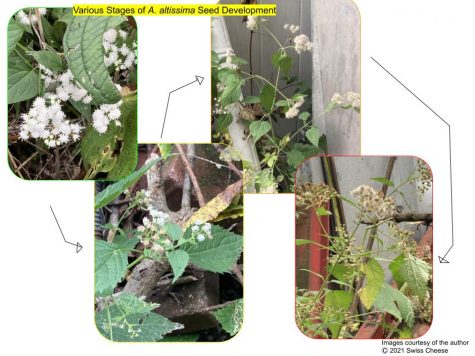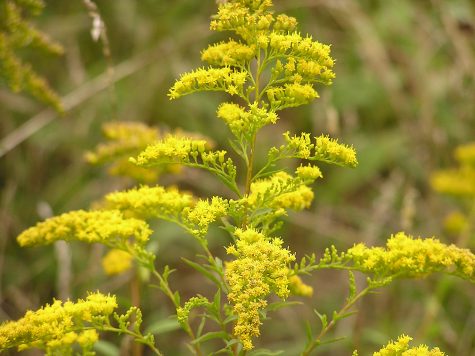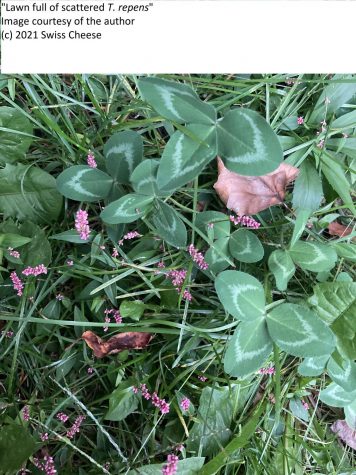SC-A1—From Ivy to Snakeroot: Fascinating Kearny Plant Life
November 9, 2021
Hello LMS Digital News readers, and welcome to my first article: SCA1! In case you were wondering, SC-A1 stands for: Swiss Cheese (my pseudonym), Article 1. This article is all about four wondrous plant species found in Kearny, NJ!
Ageratina altissima
PHOTO:Manuel A. Paz, White Snakeroot Diagram

Common Name: White Snakeroot
NATIVE
White snakeroot is a native plant species in this region, and growths are surprisingly common in Kearny! This plant is easily recognizable with its tiny “spiky” white flowers and serrated leaves, but should not be confused with Lesser Snakeroot(Ageratina aromatica) or Common Boneset(Eupatorium perfoliatum). A key feature that distinguishes this plant from similar ones is that the serrated leaves grow from a branched-off part of the stem. This plant is rarely noticed when young, as it tends to camouflage with dark leafy undergrowth and prefers to grow in the shadows. White Snakeroot is infamous for its deadly poison, tremetol, an accumulative toxin that causes “Milk Sickness.” This sickness is passed from cattle, to milk, to humans, leading to almost certain death for the victim. “Milk Sickness” is even believed to have been the cause of Abe Lincoln’s mother’s death! However, White Snakeroot has its benefits. Its blooms are a pollinator’s dream come true, and help them survive the frigid winter months. As long as you look but don’t touch, this plant has the potential to do more good than harm.
Ambrosia artemisiifolia
PHOTO:Manuel A. Paz, Blooming Ragweed Flickr (lcm1863)

Image Credits: lcm1863, Flickr(https://www.flickr.com/photos/lcd1863/6615210981)
Creative Commons License:https://creativecommons.org/licenses/by-nd/2.0/
Common Name: Common Ragweed
NATIVE
Ever had a runny nose that seemed to last forever, and just kept getting worse and worse? This is just one of the many irritating symptoms of a common allergy called hay fever. But what does this have to do with ragweed? The answer may be obvious yet alarming: ragweed is a major cause of hay fever. Some flowers release HUGE amounts of pollen, making this a big part of allergy seasons worldwide. This plant, though not at ALL allergy friendly, is a major source of food for pollinators. As with most other plants, as long as you look, but don’t touch, ragweed’s beauty can truly be appreciated.
Hedera helix
PHOTO:Manuel A. Paz, English Ivy Image

Common Name: English Ivy, Common Ivy
INTRODUCED
Ever heard that hiker’s rhyme “Leaves of three, let it be; it’s poison ivy!” or “Leaves of three, let it be; leaves of five, let it thrive?” This may not be poison ivy, but it is just as dangerous
English Ivy (also known as ivy) is a plant quite similar to poison ivy(Toxicodendron radicans) in appearance and effect. It causes mild to severe rashes on the skin and is easily overlooked when hiking, playing sports, or even in your backyard. However, it is not always harmful. Ivy can be used in gardens or backyards for decorative purposes, such as for covering “eye sore” zones and on fences to patch up holes. While Common Ivy may not be as well known as its notorious cousin, it is definitely a big part of local culture.
Trifolium repens
PHOTO:Manuel A. Paz, Clovers!

Common Name: White Clover
INTRODUCED
White clovers, a species of three-leaved clover (genus Trifolium, hence the name), is a common sight on American lawns. Also known as a shamrock, this plant is a national Irish symbol, and four-leaved ones are even considered good luck! Most are regular, but as in the image, enough water and good soil can produce rather large ones. When mature, small white flowers begin to appear and may attract pollinators such as bumblebees. These plants are sometimes classified as “weeds” and they tend to sprout in all sorts of places, turning barren wastelands into miniature wildlife havens. Four-leaved ones are EXTREMELY rare, caused by genetic mutations (See https://www.sciencedaily.com/releases/2010/06/100624141000.htm) , but occasionally you may spot one or two. They may be small, but you should never underestimate their importance.
Thank you for reading this article! I hope that you enjoyed learning about Kearny’s wonderful flora, and that you have gotten to know the nature around you. Stay tuned for the next Swiss Cheese article, and until next time, enjoy the wilderness around you!
Mini-Trivia For Students: Enjoy!: https://forms.gle/b5e7CFitzx5vikFz7
Printable PDF Version for Students Available: https://drive.google.com/file/d/10wU7gxsYnHyLIAUOHcgXwFwzhgjHBgTL/view?usp=sharing
Patricia Hester-Fearon • Nov 10, 2021 at 8:09 am
Manuel, you have written an interesting informative article on plants…thank you for sharing your passion !